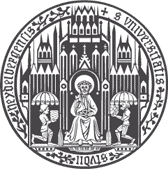
Semantic relations in knowledge repositories and in texts
Kursbeschreibung
| Studiengang | Modulkürzel | Leistungs- bewertung |
|---|---|---|
| BA-2010[100%|75%] | CS-CL | 6 LP |
| BA-2010[50%] | BS-CL | 6 LP |
| BA-2010[25%] | BS-AC, BS-FL | 4 LP |
| Dozenten/-innen | Vivi Nastase |
| Veranstaltungsart | Proseminar |
| Erster Termin | 26.04.2017 |
| Zeit und Ort | Mi. 14:15–15:45 INF 325 SR 24 |
Leistungsnachweis
- 20% questions and participation
- 40% presentation
- 40% project
Inhalt
Semantic relations describe how things interact or how they are related. We can find such relations in ontologies that capture knowledge about the world and how the objects in the world are related, and in texts where entities and their relations and interactions are mentioned. We need both these sources of semantic relations -- we can use texts to populate ontologies, and we can use ontologies to make sense of new texts.
The course will focus mostly on semantic relations between nominals, and we'll explore these relations from both a theoretical and a practical perspective. The theoretical exploration sketches the historical path which has brought us to the contemporary view and interpretation of semantic relations. We will discuss a wide range of relation inventories proposed by linguists and by language processing people. Such inventories vary by domain, granularity and suitability for downstream applications.
On the practical side, we will investigate the recognition and acquisition of relations from texts. For supervised learning methods, we will review some of the available datasets, the variety of features which can describe relation instances, and learning algorithms found appropriate for the task. Next, we'll look into weakly supervised and unsupervised learning methods of acquiring relations from large corpora with little or no previously annotated data. We will see how enduring the bootstrapping algorithm based on seed examples or patterns has proved to be, and how it has been adapted to tackle Web-scale text collections. We also see a few machine learning techniques which can perform fast and reliable relation extraction by taking advantage of data redundancy and variability.
We will look at other semantic relations that serve to organize knowledge -- such as entailment relations -- and how they fit into the semantic relation landscape.
Kursübersicht
Seminarplan
| Datum | Sitzung | Materialien |
| 26.04.2017 | Introduction and historical overview | Part I |
| 3.05.2017 | Semantic relations between nominals, semantic relations between concepts
List of papers for presentations |
Part II Read more about this in the book chapters |
| 10.05.2017 | Supervised learning of semantic relations: entity and relation features, data, approaches
Data and other project details for the course project |
Part III Read more about this in the book chapter |
| 17.05.2017 | Unsupervised learning of semantic relations | Part IV Read more about this in the book chapter |
| 24.05.2017 | Deep learning for semantic relations | Part V |
| 7.06.2017 | [Caroline] Relation classification via convolutional deep neural network Zeng et al., COLING 2014 | presentation |
| 14.06.2017 | [Theresa] Open language learning for information extraction Mausam et al., EMNLP 2012 [additional reading] Identifying relations for open information extraction Fader et al., EMNLP 2011 |
presentation |
| 21.06.2017 | [Andreas] A Dependency-Based Neural Network for Relation Classification Liu et al., ACL 2015 | presentation |
| 28.06.2017 | [Calvin] Learning word representations by jointly modeling syntagmatic and paradigmatic relations Sun et al., ACL 2015
[additional presentation -- Vivi] Semantic relations in continuous low-dimensional vector spaces |
presentation slides |
| 5.07.2017 | [Janos] Coupled semi-supervised learning for information extraction Carlson et al., WSDM 2010 | presentation |
| 12.07.2017 | Projects -- information here | |
| 17.07.2017 (MONDAY!) | Test data released for the class projects | |
| 19.07.2017 (the usual Wednesday) | Projects due! | |
| 26.07.2017 | Project presentations (10 minutes each) and awards ceremony! |


